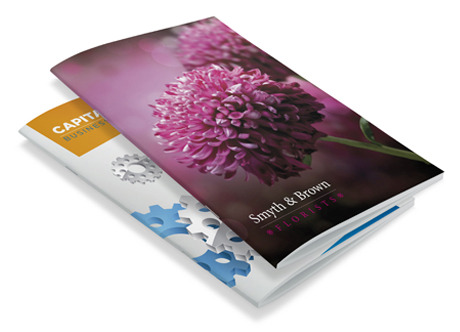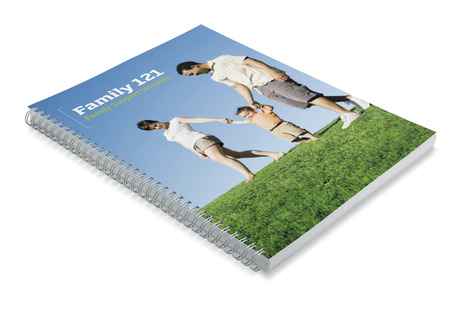5 Things to remember when printing brochures « Back to list
We often discuss the advantages of using printed brochures, and when deciding on using brochures, it’s important to ensure you have a well thought design process. It’s not just the design process that is important when it comes to printing brochures for your business. Today we are going to look at 5 things that many individuals forget about when it comes to creating printed brochures.

Before printing your brochure, be sure you have checked the following
1. An engaging cover page
Before you even think about pressing print or sending your brochure on to a print company, make sure your cover page will engage with your customers. The cover page will be the one page that leaves your customer wanting to find out more. It should entice them into reading the brochure and turning the page to find out more. Have a special offer or strong heading and a clear image on this page, to explain to your customers what the brochure is about. You can maybe even highlight some key pages within the brochure for them to turn to. Don’t send your brochure to print until you are 100% happy with the cover page. Remember, it’s the first thing anyone will see, and it will influence whether or not it is taken.
2. The type of binding
Next up you need to decide on how your brochure is going to be held together. The quantity of pages you are using in your brochure can impact on what you chose here, but the cost and look of your brochure will also play their part. Saddle stitched (stapled) and perfect bound brochures are the most popular choice of binding, but wiro bound documents are popular for professional documentation.

3. Your borders and bleed
If you are printing a brochure with background colours or images, it’s important to remember the bleed area. The bleed area will ensure that white strips won’t appear on your final page, as this can sometimes happen due to movement in the print process. Setting up a 5mm border around your page will also ensure no text or graphics run off the page. The last thing you will want is to print a brochure only to notice that some letters are missing. This 5mm border is known as the safe area. You can find out more about the bleed area here.
4. Remember to proof
One thing that many people forget about when it comes to printing a brochure, is the importance of proofing. It’s very rare that you would put something into the paper or onto a billboard without proofing. It’s important to proof your final brochure before sending to print. Try and get a friend or family member to proof it for you, as fresh eyes can often bring a new perspective to how clear your message is coming across. If you have invested a lot of time and money into developing a brochure for your business, it may be worth considering investing in a professional proofreader; someone who will look at your brochure and check for any spelling, grammar and general layout issues.
5. Only print what you need
Our last recommendation is to only print what you require. Too often, businesses will opt to print more because they are making a saving on a price per brochure basis. This is something to avoid as you will end up spending more money than you had set out to, and you may also find brochures lying about gathering up dust for months and even years. Only print what you need, and if the brochure is a success and you need more, then simply print more.
Remember to submit print ready artwork
When you are submitting your artwork to print, be sure it is saved in a print ready format (PDF is usually the best way). Check out our recent infographic on setting up and submitting artwork for digital printing for more information on how to best submit print ready artwork.
If you require further information on getting your next brochure ready for print, get in touch with our expert print team today.
Keep up to date with all the latest news here at Digital Printing, by connecting with us on Facebook, Twitter and Google+.


